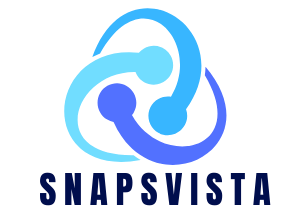Kaamulan Festival
The Kaamulan Festival is an annual cultural event held in the province of Bukidnon in the Philippines. It is a week-long celebration that showcases the rich cultural heritage of the indigenous peoples of Bukidnon, particularly the seven hill tribes: the Bukidnon, Higaonon, Talaandig, Manobo, Matigsalug, Tigwahanon, and Umayamnon.
The festival’s name, “Kaamulan,” is derived from the Binukid word “amul,” which means “to gather.” It symbolizes the gathering of these diverse indigenous groups for a collective celebration of their customs, traditions, music, dance, rituals, and other cultural practices.
During the festival, various activities take place, including street dancing competitions, indigenous sports events, traditional rituals, art exhibits, and a trade fair that features local products and crafts. One of the highlights is the “Lumadnong Gama,” a showcase of traditional music and dances performed by the indigenous communities. Also, read about hair Can We Cut Hair on Saturday?
The Roots of Kaamulan: A Historical Overview
The origins of Kaamulan date back to ancient times, rooted in the rituals and ceremonies of indigenous tribes. Derived from the Binukid word “Amul,” meaning “to gather,” the festival symbolizes unity among various indigenous groups. It pays homage to the harvest deity and the spirits of ancestors, emphasizing the interconnection between people, nature, and the divine.
Rituals and Traditions: A Glimpse into Kaamulan’s Cultural Significance
Gathering of the Tribes: Uniting of Indigenous Peoples
Kaamulan is a time of unity, where diverse indigenous communities converge to showcase their distinct cultures. The festival opens with a ceremonial gathering, fostering a sense of togetherness among tribes that might have once been in conflict.
Indigenous Rituals and Ceremonies
Central to Kaamulan are the rituals that pay homage to ancestral spirits. Traditional ceremonies involve offerings of rice, animals, and other symbolic items. Dance and music play an integral role, with performers adorned in traditional attire.
The Vibrant Parades: A Spectacle of Colors and Dance
Street Dancing: A Fusion of Tradition and Modernity
One of the festival’s highlights is the street dancing competition. Tribes dress in elaborate costumes, their movements narrating stories of their heritage and daily life. Amidst modern beats, ancient rhythms find a harmonious blend, captivating the audience.
Float Parade: A Moving Showcase of Creativity
Elaborately designed floats adorned with flowers, fruits, and indigenous motifs parade through the streets. These floats not only showcase creativity but also provide a platform to convey messages about preserving nature and traditions.
Gastronomic Delights: Tasting the Flavors of Kaamulan
Traditional Cuisine: A Culinary Journey Through Cultures
The festival’s culinary offerings are a feast for the senses. From pinikpikan, a traditional chicken dish, to binaki, a sweet corn cake, the food reflects the diverse traditions of the indigenous communities.
Local Markets: Exploring the Rich Food Heritage
Local markets during Kaamulan offer a chance to savor indigenous ingredients and flavors. Visitors can engage with locals, learn cooking techniques, and take home a piece of Kaamulan’s culinary heritage.

Handicrafts and Artistry: Showcasing Indigenous Creations
Indigenous Crafts: A Testament to Skill and Heritage
Artisans display their craftsmanship through intricate weavings, beadwork, and woodcarvings. These creations serve as tangible representations of indigenous stories, beliefs, and skills passed down through generations.
Art Exhibitions: Fusing the Past and Present
Modern art forms inspired by indigenous culture find their place in Kaamulan. Art exhibitions feature paintings, sculptures, and performances that explore the intersection of tradition and contemporary expression.
Music and Dance: The Rhythmic Heartbeat of Kaamulan
Traditional Music: Echoes of Ancestral Melodies
Traditional instruments like the kulintang and agong resonate during the festival. These musical pieces not only entertain but also carry the stories and history of the indigenous people.
Dance Performances: Stories Told Through Movement
Dance is a language of its own at Kaamulan. Every movement tells a story, depicting daily life, rituals, and ancestral narratives that have been preserved through generations.
Kaamulan Today: Modern Influences and Global Reach
While rooted in tradition, Kaamulan has evolved with the times. Modern influences have found their way into the festival, creating a unique fusion that resonates with both the young and old. Social media and digital platforms have further amplified its global reach, making it accessible to audiences beyond borders.
Environmental Advocacy: Sustaining Tradition and Nature
Amidst the celebrations, Kaamulan champions environmental awareness. Efforts are made to incorporate sustainable practices and raise awareness about the importance of preserving the natural landscapes that have been integral to indigenous cultures.
The Future of Kaamulan: Preserving a Legacy
As the world evolves, so does the Kaamulan Festival. Efforts are underway to ensure that its essence remains intact for generations to come. Preserving indigenous languages, arts, and traditions continues to be a priority.

Conclusion
The Kaamulan Festival is a kaleidoscope of culture, a convergence of histories, and a celebration of unity. As the colorful parades, soul-stirring music, and delectable cuisines intertwine, it becomes evident that Kaamulan is more than a festival—it’s a living testament to the enduring spirit of the indigenous peoples of the Philippines.
FAQs
What is the significance of the term “Kaamulan”?
The term “Kaamulan” is derived from the Binukid word “amul,” which means “to gather.” It signifies the unity and gathering of various indigenous tribes.
How long does the Kaamulan Festival typically last?
The festival usually spans ten days, during which various events, performances, and ceremonies take place.
Are visitors allowed to participate in the indigenous rituals during the festival?
While visitors are encouraged to witness the rituals, active participation is generally limited to members of the indigenous communities.
What role does modern art play in the Kaamulan Festival?
Modern art forms, including paintings, sculptures, and performances, are showcased in exhibitions, bridging the gap between tradition and contemporary expression.
How can one contribute to the preservation of Kaamulan’s legacy?
Supporting indigenous artisans, learning about their traditions, and promoting environmental awareness are meaningful ways to contribute to Kamala’s legacy.
